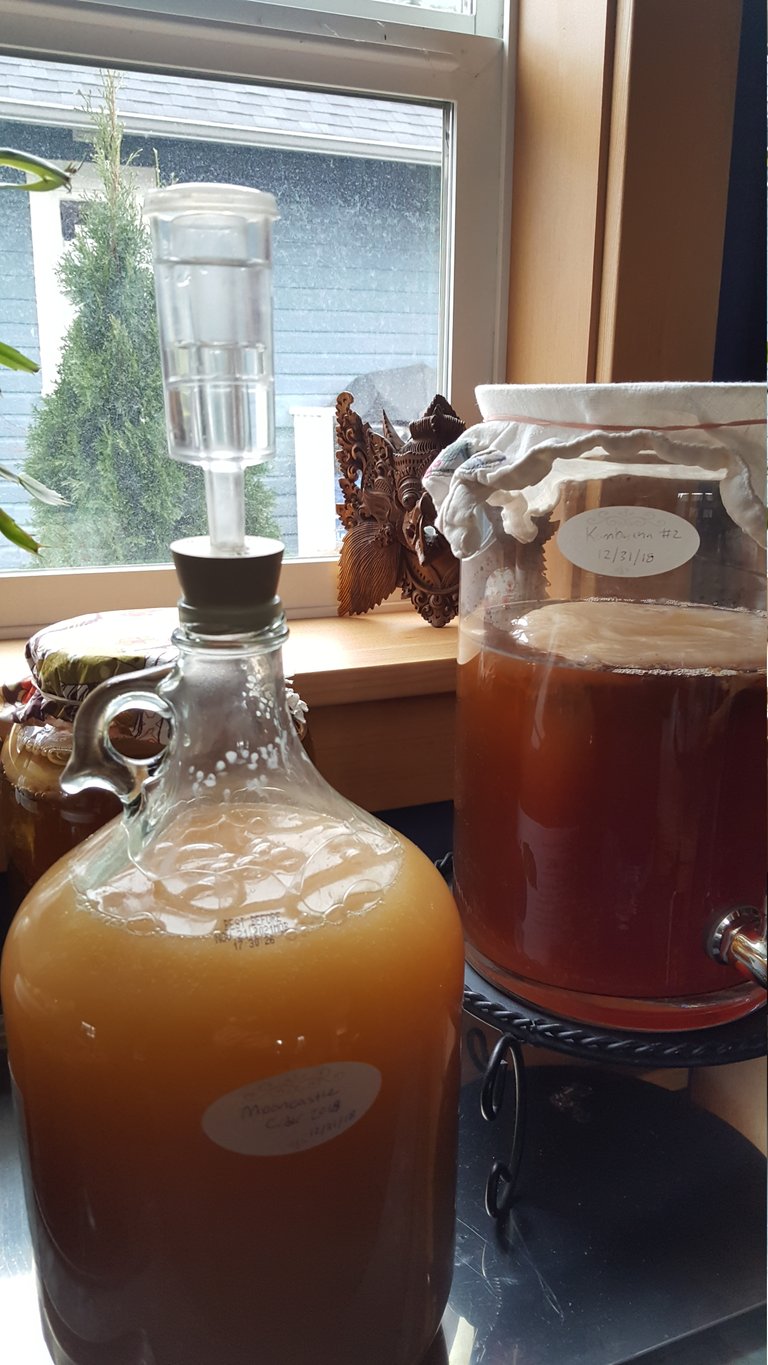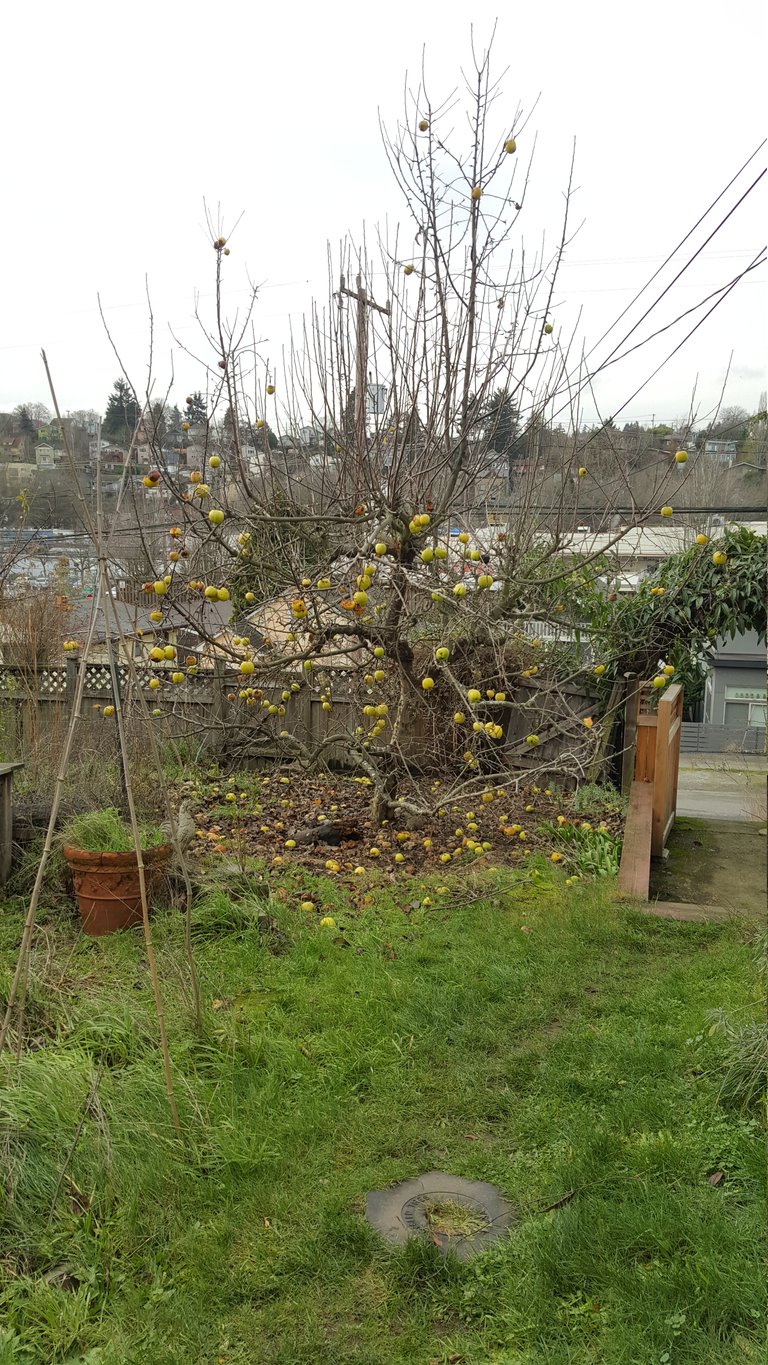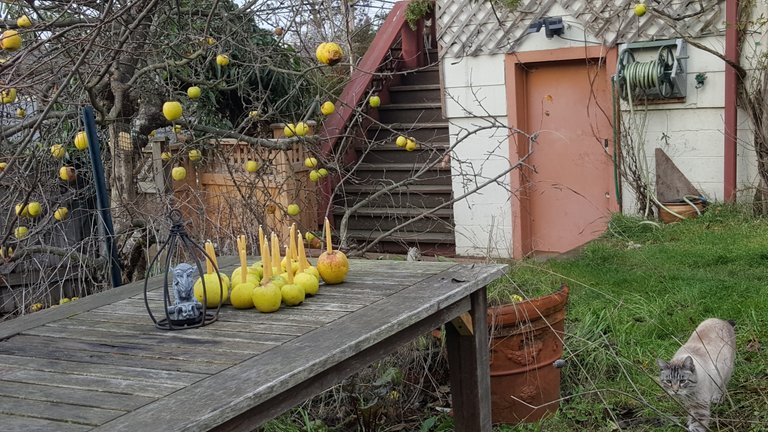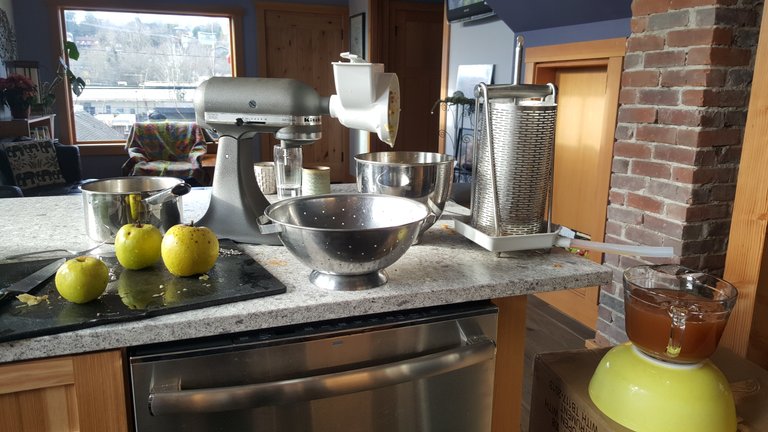
In 2008 we became the proud caretakers for a smallish apple tree when we moved to our “forever” home. It was January when we moved in and I remember there were 3 apples left on the tree, which we ate with joy, dreaming of pies, sauce and cider in the years to come. Our little tree has delivered, and grown over the years, as has the volume and complexity of our cider recipe. The first year we had 3 gallons, but the last several we have had enough for at least 5 gallons of cider.

A typical cider recipe will have multiple ingredients to bring out just the right flavors. We usually add black tea for the tannins, orange juice for acidity, pectic enzyme to clear the pectin, yeast nutrient for healthy yeast, extra sugar (or honey) to increase alcohol content, raisins for sugars and minerals, plus herbs and spices if we’re feeling fun.
This year though was different. Sadly there were too many projects that took precedence over the yearly cider ritual, and October faded to November, and then December with no cider. In late December we used a bunch late hanging apples for candle holders at our solstice spiral celebration, and it was then we decided to scrape together the last of the harvest for a quick apple cider. It helped that we also received a fruit press as a Christmas gift from family. The press is shown on the far right two photos below. We used the course shredder attachment on the Kitchenaid to prepare the apples for pressing. Since these were very late season apples, we cut out a lot of brown and worm-eaten spots before putting through the Kitchenaid.

We pressed just over one gallon and decided to make a quick and plain cider to see how it stacks up to past efforts. I almost always heat pasteurize my wines, especially small batches, because I dislike adding sulfites. Most recipes will call for a campden tablet (sodium metabisulfite) but they are largely unnecessary if you heat treat your brew before cooling and starting the ferment.

Without further ado, my simple recipe was 1 gallon of boiled apple juice, cooled outside to 70 degrees and placed in a 1 gallon bottle with a narrow neck. Next I added 5 grams of SafCider yeast by Fermentis. This is really enough for a 5 gallon batch, but it comes in single serving packets so I just used the whole thing. They cost about $4. An airlock was added to the top and then the cider was left to sit. I labeled the bottle with the date, December 31st, and now I’m waiting for the results. I plan to bottle it one month from the start date, and drink it very young. In contrast, our usual 3 -5 gallon batch we wait about a year to open, usually having our first as we are making cider the following year. We do this because it really doesn't taste that good until it has mellowed out over the year. I'm hoping this very simple 1 gallon quick cider will be drinkable in a month. If not, we'll just try to forget the bottles for a few years in our basement cold room until they will surely be more delicious.
I’ll report back in about a month on how it turns out.
Here's to a bubbly and delicious brew on the urban homestead!
Adding black tea could be the step I'm looking for. Thanks for posting. I'll give it a try on my next batch
Posted using Partiko Android
I prefer using black tea over tannic acid. Well, I've never actually used tannic acid, as I try to keep my ingredients as natural as possible. Good luck!
It's definitely one to try. Thanks
Posted using Partiko Android
I love homemade ACV but I did it a little differently... chop apples, add water and sugar, leave til cider like. Strain and wait. Can add mother from ACV.
Quince and pear cider vinegar is freaking delish.
That sounds good too...but this is not vinegar. This is hard cider. The scraps from the cider could be used for ACV per your method.
This post was shared in the Curation Collective Discord community
community witness. Please consider using one of your witness votes on us here for curators, and upvoted and resteemed by the @c-squared community account after manual review.@c-squared runs a
Oh that's wonderful. Thank you!